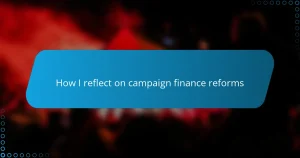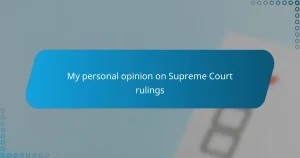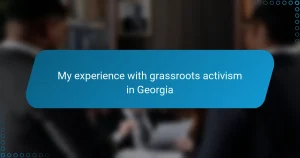Key takeaways
- Congressional debates are dynamic exchanges that reveal lawmakers’ strategies, personalities, and emotional undertones beyond mere policy discussion.
- Analyzing language, nonverbal cues, and patterns across multiple debates helps uncover underlying motivations and the broader implications of arguments.
- Tools like transcription software and sentiment analysis enhance understanding of debates by capturing shifts in rhetoric and emotional tones.
- Interpreting debate strategies involves recognizing goals beyond facts, such as rallying support or framing issues to appeal emotionally to the public.
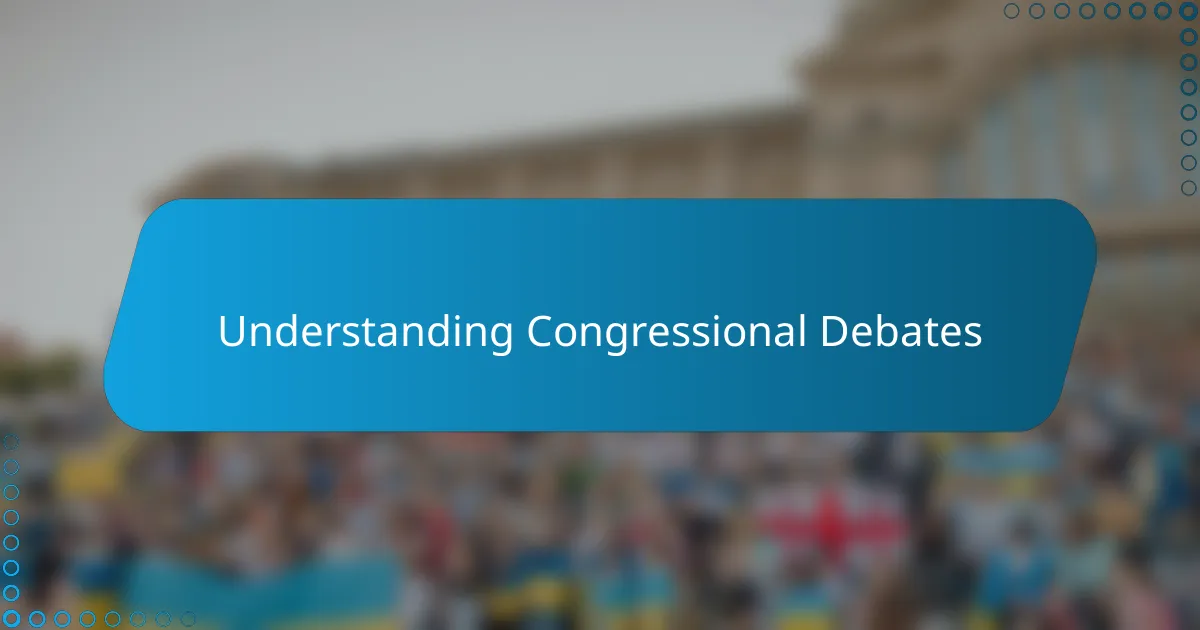
Understanding Congressional Debates
When I first started watching Congressional debates, I quickly realized they’re not just formal speeches; they’re a dynamic exchange where strategy, persuasion, and sometimes even frustration come alive. Have you ever caught yourself wondering what really drives a lawmaker’s tone or choice of words during these intense moments? For me, cracking that code adds a whole new layer to understanding their true intentions.
One thing I’ve noticed is how much the setting influences the debate. It’s like being in a room where every word counts, and every pause can carry as much weight as a well-crafted argument. This pressure cooker environment reveals more than just policy differences—it exposes personalities and political alliances in real time, making the debates both unpredictable and deeply human.
Beyond the surface level of facts and figures, what fascinates me most is the emotional undercurrent. When passions flare, you can almost feel the stakes rising in the room. That’s when debates become about more than legislation; they become a mirror reflecting the country’s broader struggles and hopes, a reminder that politics is as personal as it is procedural.
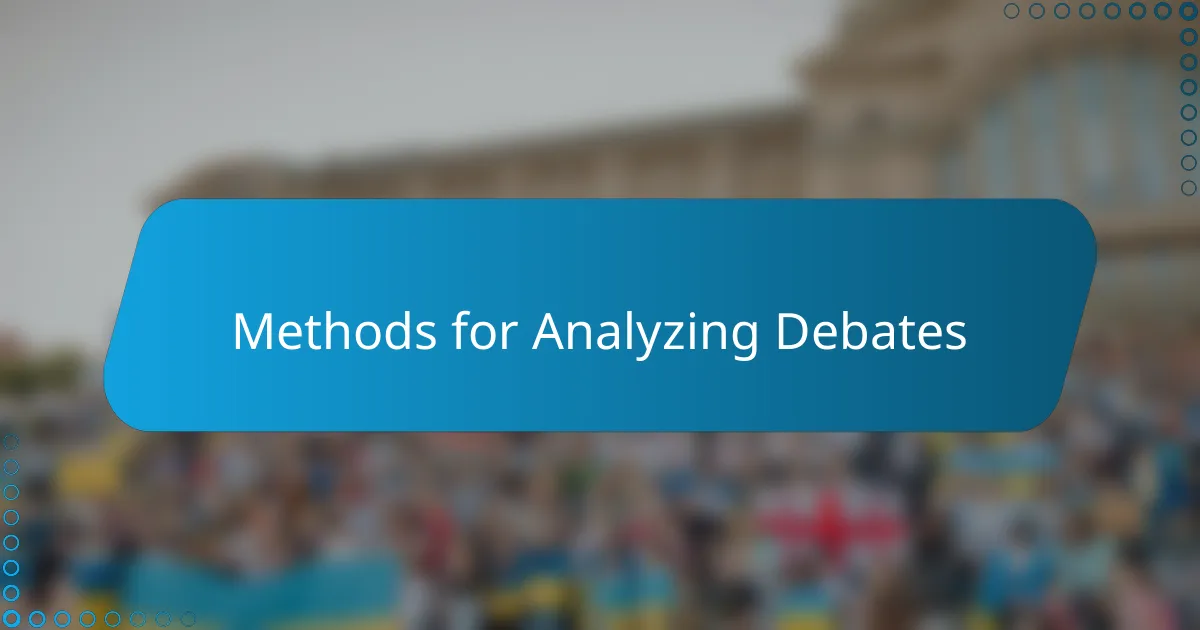
Methods for Analyzing Debates
When I analyze Congressional debates, one of my first steps is to focus on the language lawmakers use. Do they lean on facts, or do they rely more on emotional appeals? Picking up on these cues helps me understand not only their arguments but also their underlying motivations.
I also pay close attention to nonverbal signals—pauses, tone changes, even eye contact. These subtle elements often reveal hesitation or confidence, which numbers and policy details alone can’t capture. Have you ever noticed how a single pause can change the entire meaning of a statement? It’s fascinating to watch those moments unfold.
Finally, I track patterns over multiple debates. Are certain themes repeated? Do legislators shift their stance under pressure or stick firmly to their guns? This longitudinal view lets me see beyond isolated clips and grasp the bigger picture of political strategy and evolving alliances. It’s like piecing together a puzzle where every session adds a new piece.
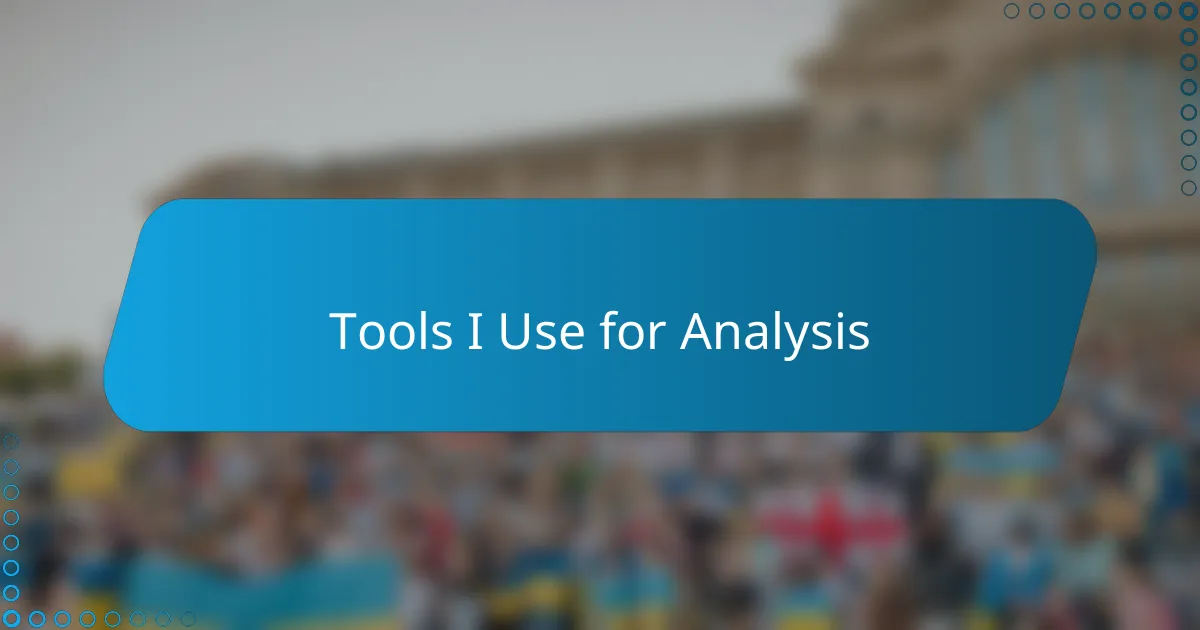
Tools I Use for Analysis
One of the first tools I rely on is transcription software. Having the entire debate in text form allows me to sift through arguments more systematically, highlighting key phrases and catching subtle shifts in rhetoric I might miss when just listening. It’s like having a replay button for every word spoken—a real game changer.
I also use data visualization tools to map out speaking patterns and interjections between lawmakers. Seeing who interrupts whom, or which topics spark the most back-and-forth, gives me a clearer sense of the debate’s underlying tensions. Have you ever noticed how some voices dominate the floor? These tools help me put that observation into a visual context.
Lastly, sentiment analysis software plays a surprising but valuable role. By quantifying the emotional tone behind statements, I can detect whether a speech leans more hopeful, confrontational, or defensive. Sometimes, this emotional undercurrent reveals more about a politician’s strategy than the content itself, which I find endlessly intriguing.
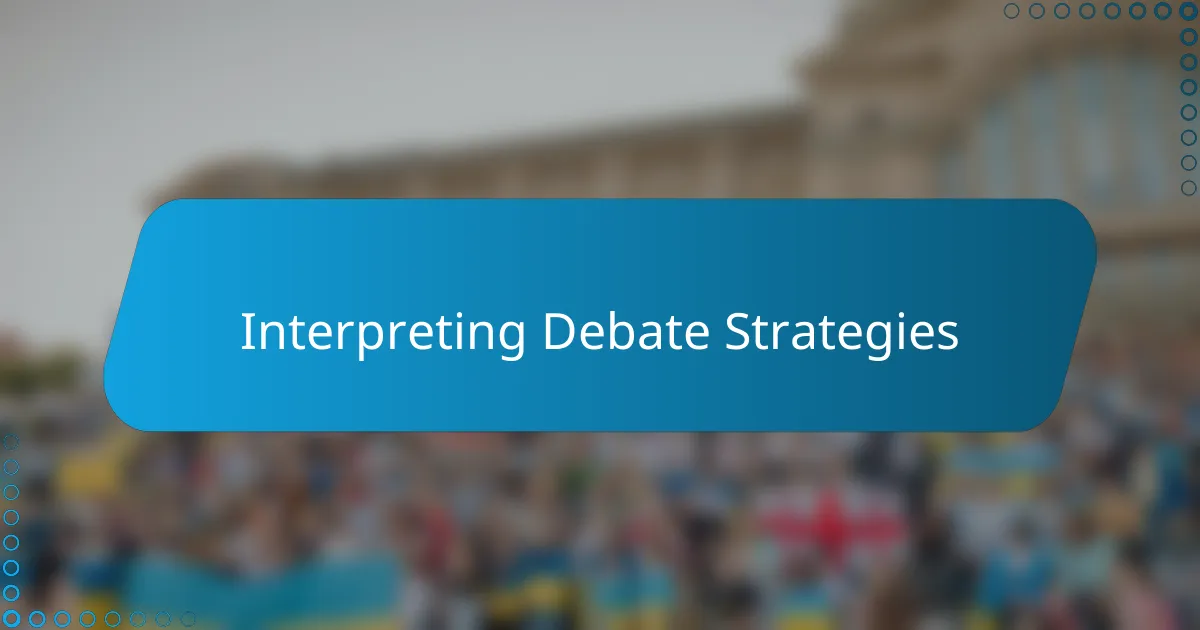
Interpreting Debate Strategies
When I dive into interpreting debate strategies, I start by asking myself: what’s the goal behind each argument? Sometimes a lawmaker isn’t just trying to win on the facts—they’re working to rally their base or unsettle their opponents. Recognizing these tactics brings a new depth to what might otherwise seem like simple talking points.
I’ve noticed how some speakers use repetition as a strategic tool, hammering home a message until it sticks in the minds of listeners. It’s fascinating to see how this method can build momentum or create a sense of urgency, even if the underlying facts haven’t changed much. Have you caught yourself remembering a phrase long after a debate because it was repeated with passion?
Then there’s the way lawmakers frame issues—choosing words that appeal to values or emotions rather than just logic. I find that spotting these framing strategies often reveals what they’re really aiming for, whether it’s to inspire hope, stir fear, or promote unity. It makes me wonder: how much of what we hear is designed to move hearts, not just minds?
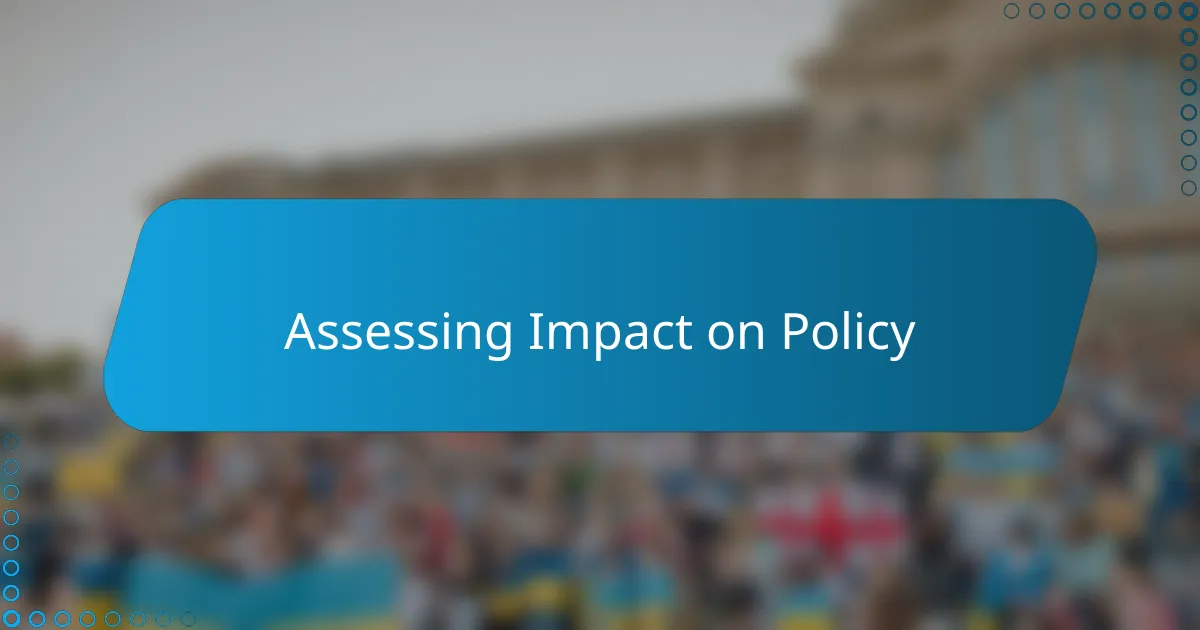
Assessing Impact on Policy
Assessing the impact of a Congressional debate on actual policy is always a tricky yet fascinating exercise for me. I often ask: Did the arguments shift the balance enough to change a bill’s direction, or were they more about posturing? Sometimes, despite fiery exchanges, the final vote barely budges—and that tells me a lot about the difference between theater and tangible influence.
What really grabs my attention is when I spot subtle shifts in language or priorities after a debate session. For instance, I recall tracking how a lawmaker softened their stance on a contentious issue following intense back-and-forth, which later paved the way for a compromise amendment. These moments make me realize that impact isn’t always immediate or obvious but can ripple through legislative processes in unexpected ways.
I also consider the broader context—how debates resonate with public opinion and pressure from interest groups. Does a speech inspire grassroots activism or media campaigns that push lawmakers to act? In my experience, these external forces often amplify or diminish the debate’s policy footprint, reminding me that Congress doesn’t operate in a vacuum but responds to a complex web of influences.
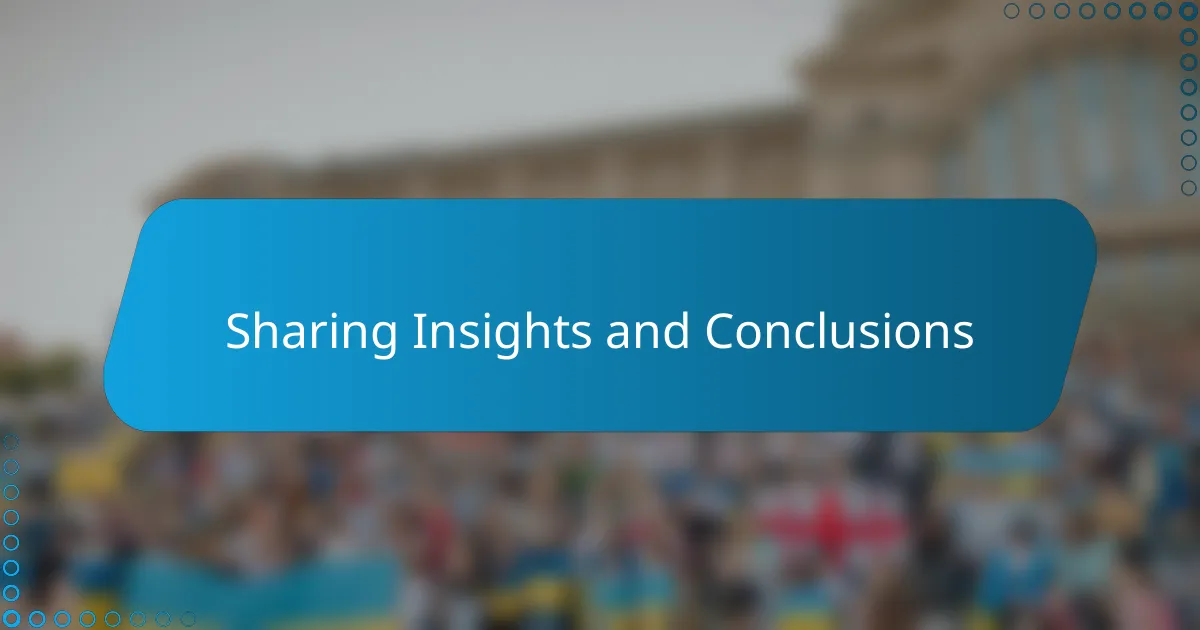
Sharing Insights and Conclusions
When I’m ready to share insights and conclusions, I find it’s essential to connect the dots between what was said and what was meant. Have you ever been struck by a phrase that seemed offhand but actually revealed a deeper strategy? Those moments are gold mines for understanding the real stakes at play.
I also notice how my conclusions evolve as I compare multiple debates and viewpoints. Sometimes I think I’ve nailed down a clear message, only to realize later that what felt like certainty was actually influenced by the immediate emotions in the room. This back-and-forth keeps me humble and constantly questioning—does this argument truly hold up, or is it just persuasive rhetoric?
Ultimately, sharing these insights is about sparking a broader conversation. When I lay out what I’ve gleaned, I want to inspire others to see beyond headlines and soundbites, to ask their own questions, and to recognize the nuances that make Congressional debates a living, breathing performance of democracy. Have you ever found yourself reconsidering your take on a debate after hearing a fresh perspective? That’s the kind of dialogue I hope to encourage.
